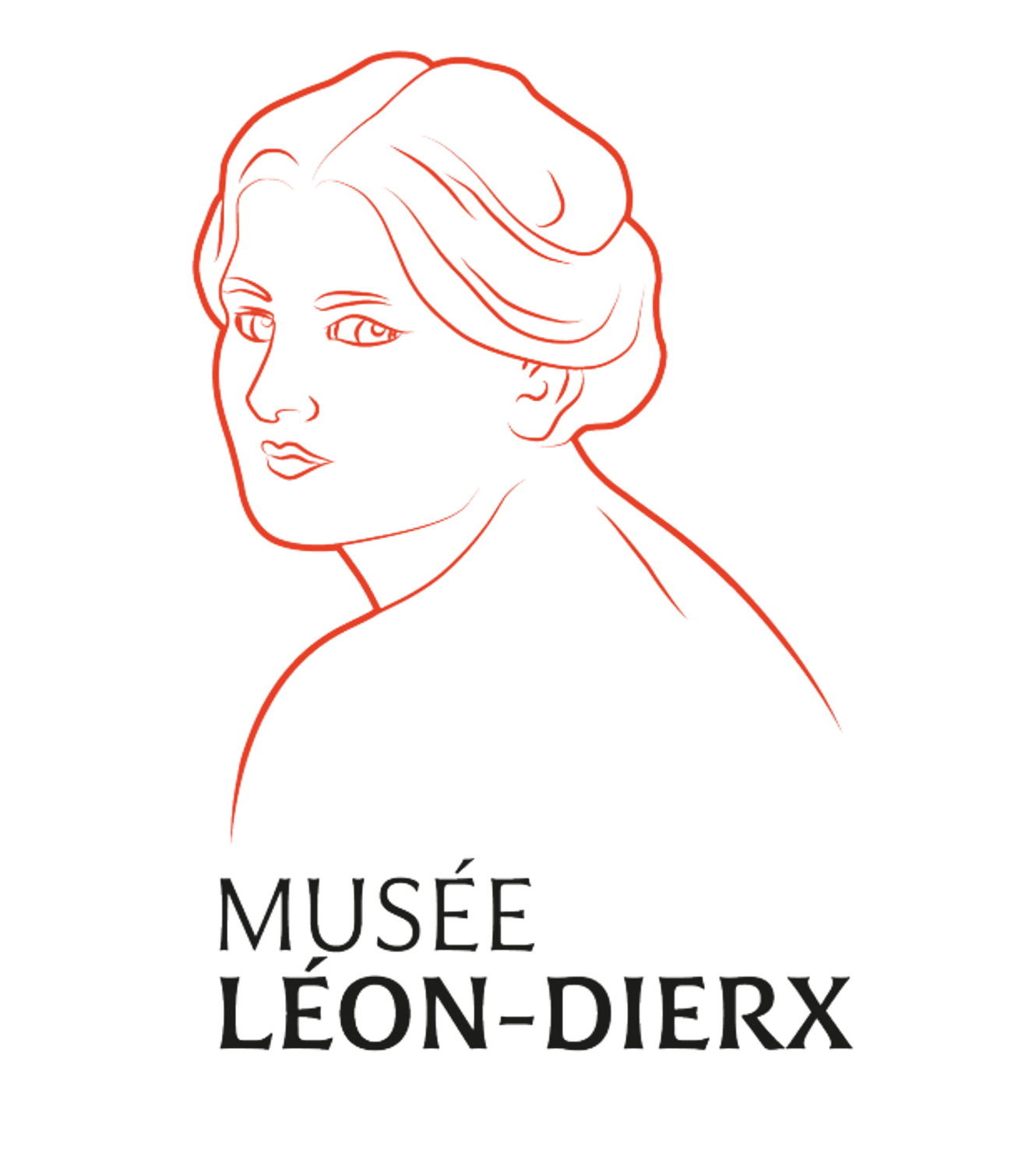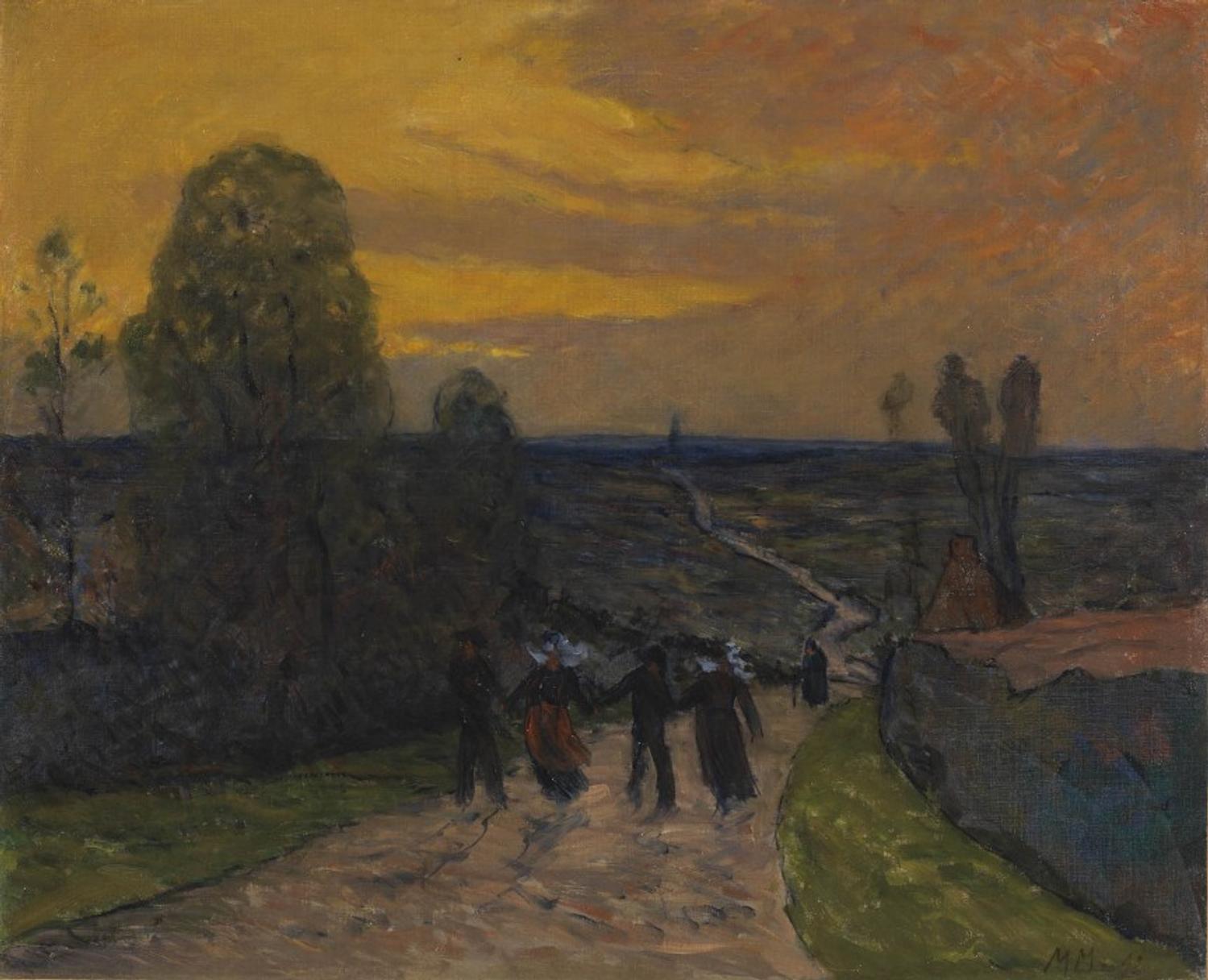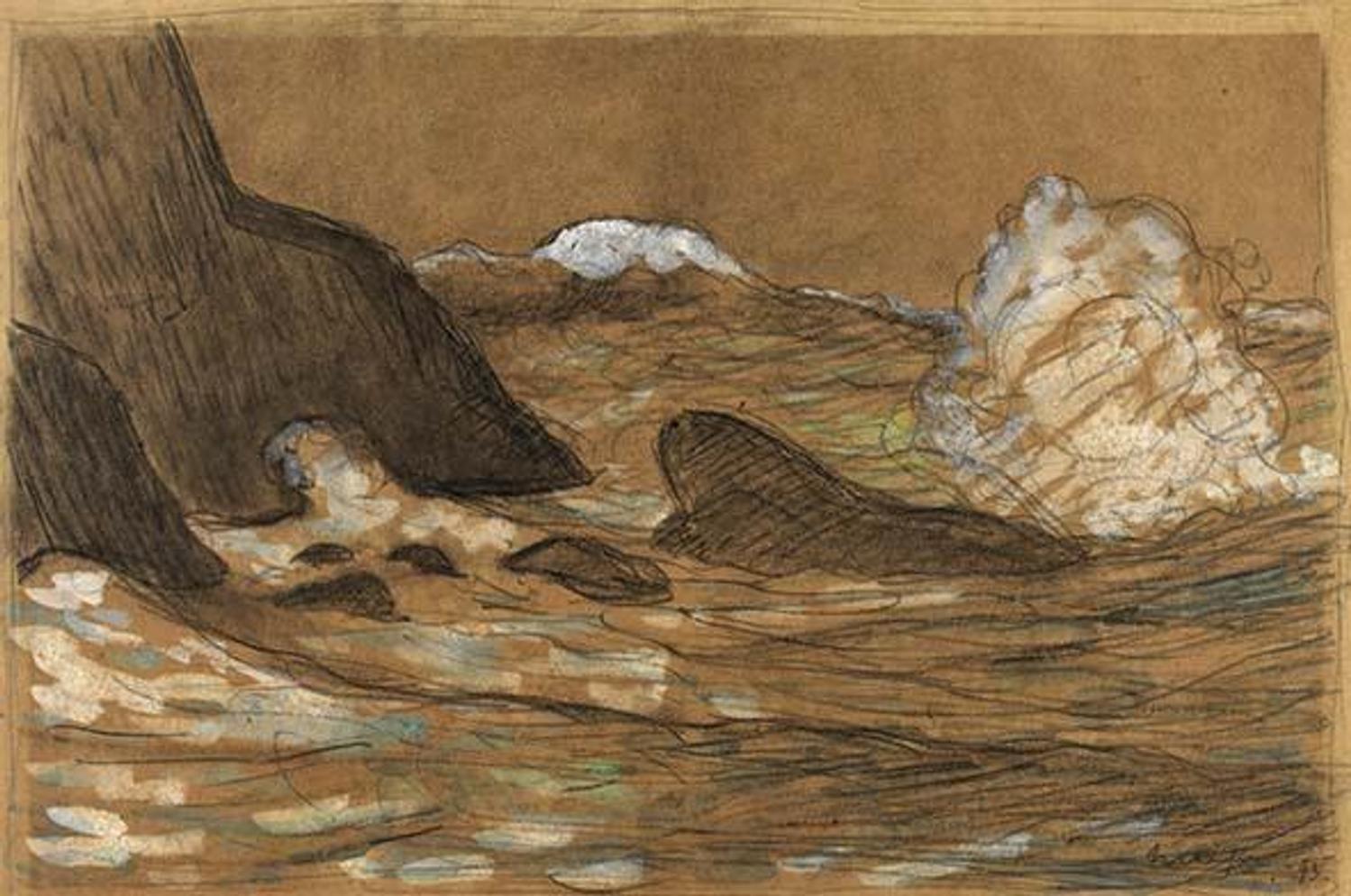THE MASTERPIECES OF THE LEON-DIERX ART GALLERY : Maxime MAUFRA
Maxime MAUFRA
Nantes, 17 May 1861 – Ponce-sur-Loire, 23 May 1918
Originally from the Atlantic west coast of France, Maxime Maufra started to paint in the open air with the landscape painters from Nantes who were close to the Barbizon school. He then travelled to England, where he discovered the work of Constable and Turner.
En 1890, he decided to devote himself solely to painting. While staying in Pont-Aven and Pouldu, he met Gauguin, Serusier and their friends and was thereby influenced by Synthetism. However, Maufra always refused all doctrines and would not belong to any school. For a number of years, he travelled all over Brittany, producing a large number of charcoal sketches lit up with pastels, coloured notations for future paintings or etchings.
In 1892, he settled in Paris and his studio became a meeting place for poets, artists and political figures. From 1892 to 8094, he took part in exhibitions devoted to the works of Impressionist and Symbolist painters at the Le Barc de Boutteville gallery, which held an individual exhibition of his work in 1894. In that same year, he signed an exclusivity contract for his work with Paul Durand-Ruel, but Ambroise Vollard, who had recently settled in the rue Lafitte, travelled to Pont-Aven with the intention of purchasing a few of Gaugin’s works, but also Maufra’s.
He exhibited regularly at various Salons in Paris and produced a large number of paintings in the Impressionist style for the American market.
Bretons sur la route (Bretons on the road), Maxime MAUFRA
Undated
Oil on canvas
59,3 x 72,9 cm
Inv 1947.01.79
Lucien Vollard donation
A group of Bretons on a village road at dusk and the silhouette of a tree against the backdrop of the sunset: the landscape is simple and the atmosphere gives a strange feeling of solitude, both peaceful and mysterious, before this wide stretch of landscape with night falling.
Like in his drawings, the different elements of the landscape – the tree, the path and the figures – are clearly identified, outlined using discontinued black brushstrokes, creating an effect of depth and dynamics. The touches of colour are short and fluid, giving the landscape a certain degree of movement.
The horizon separates the painting into two contrasting sections: the cloudy sky with its orange crepuscular light contrasts with the darker landscape which is softened by the ochre-coloured earth road. The warm colours of the road and of the open sky at sunset may have been inspired by discussions between Maufra and Gauguin on the use of pure colours such as emerald green and chromium yellow. “As a landscape painter, I painted what moved me, gazing at nature, attempting to express the character of what attracted me and injecting into my work the emotion I felt,” declared Maufra. The colours become symbolic, the forms express the essential, with Maufra attempting to achieve the very essence of things.
Maxime Maufra, La vague (The wave), 1893.








